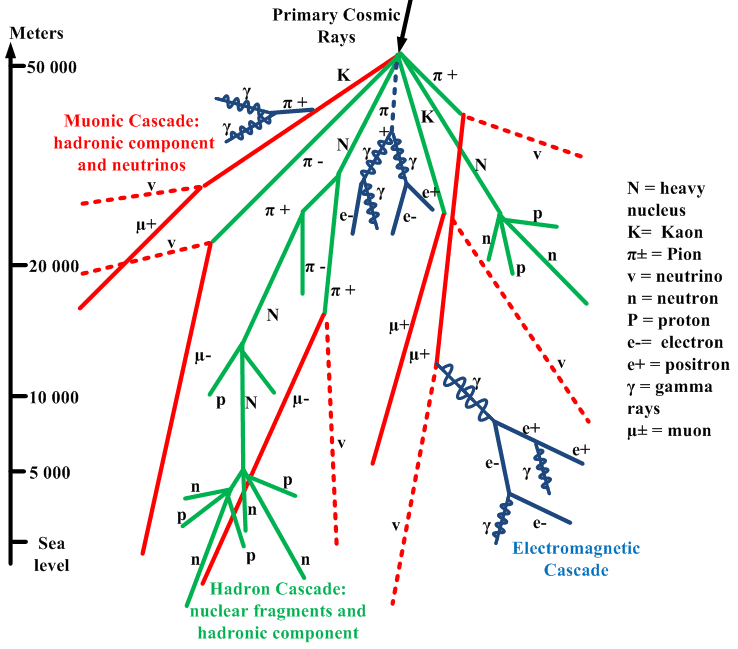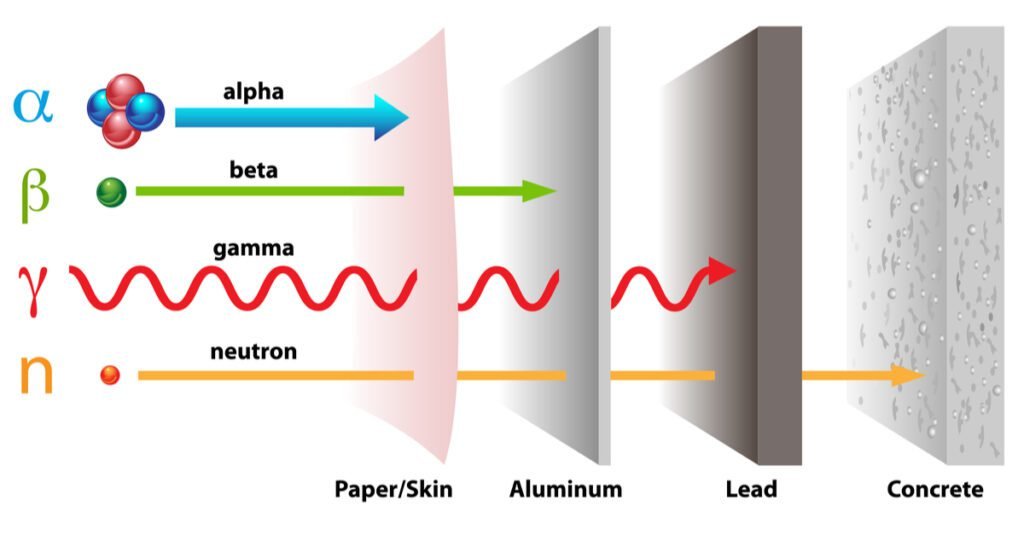The cosmic rays are a set of particles with high energy that arrives at Earth’s atmosphere every day, at speeds close to the light.
Discovery
The cosmic rays were discovered in 1912, by Austrian physicist Victor Hess. He climbed in a ballon at 5300 meters (17388.45 feet) altitude, he measured the air’s ionization rate at this altitude and found out that ionization rate is 3 times higher than at sea level. Discovering that the radiation comes from space. Many particles have been discovered observing the cosmic rays, for example, the positron (electron’s antimatter), the muon, the pion, and the kaon.
Composition of cosmic rays
89% of cosmic rays are protons. Also are composed of helium nuclei or alpha particles, electrons, and heavy elements nuclei. The two latter constitute approximately 1% of cosmic radiation. Energies of these particles vary from around 1 GeV (Giga electron-volt) to higher than 1\cdot 10^{20} (1 followed by 20 zeros) electron-volts.

Origins
The less energetic particles come from the Sun, originating from solar flares and coronal mass ejection. The most energetic particles come from supernovas, supermassive black holes in galaxies’ centers, pulsars, and quasars. It’s much easier to discover the origin of neutrons and gamma ray (very high energy photons) than the origin of charged particles. Because the latter ones are deflected by magnetic fields on the way.
The particle shower
The cosmic rays produce billions of subatomic particles in high atmosphere, producing a chain reaction. When a proton from space collides with an atom, are produced protons, neutrons, and subatomic particles called pions and kaons.

Pions and kaons can be electrically neutral (\pi^{0} and K^{0} respectively) or have positive or negative charge (\pi^{+},\pi^{-},K^{+} and K^{-}). These particles have a very short lifetime, they last a fraction of a billionth of a second. When a charged pion decays, are produced a muon with the same electric charge and a neutrino (\nu).
\pi^{+}\rightarrow \mu^{+}+\nu
\pi^{-}\rightarrow \mu^{-}+\nu
98.8% of neutral pion (\pi ^{0}) decays produce 2 gamma ray photons. 1.2% of decays generate an electron, a positron, and a photon.
\pi ^{0}\rightarrow 2\gamma
\pi ^{0}\rightarrow e^{-}+e^{+}+\gamma
The kaons have many different reactions and decay in pions, muons, neutrinos and positrons. Muons also are unstable.
\mu ^{-}\rightarrow e^{-}+\nu+\bar{\nu}
\mu ^{+}\rightarrow e^{+}+\nu+\bar{\nu}
Where \bar{\nu} is the antineutrino, neutrino’s antimatter.

The cosmic rays also generate many isotopes, for example, carbon 14.
Cosmic rays and space travel
The atmosphere and magnetic field of Earth block most of the harmful cosmic radiation, but there aren’t these protections in space. What makes cosmic radiation one of the biggest obstacles to space travel. Because they are ionizing particles, that can damage DNA molecules, ripping off electrons and creating ions. Prolonged exposure can cause cancer.

Also can cause damage to electronic devices, inverting bits in digital circuits. Electric and magnetic fields with enough power can deflect charged particles. Materials like liquid hydrogen, water, or polyethylene with a high hydrogen content can protect against lower energy particles. However, more energetic particles can generate secondary radiation from protection material.

Some scientists believe that cosmic rays can be contributed to the appearance of life on Earth.



